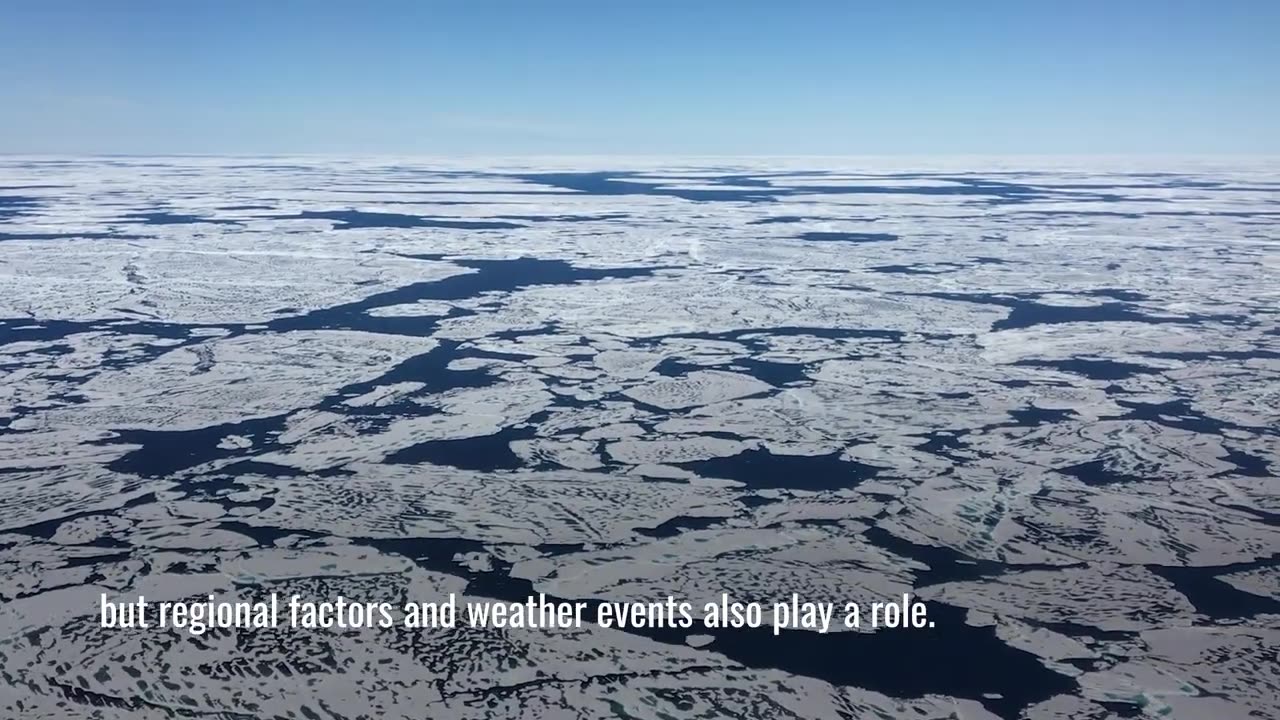Premium Only Content

Arctic Sea Ice Hits 2023 Maximum
On March 6, 2023, the Arctic sea ice pack appeared to reach its maximum extent for this winter, at 14.62 million square kilometers, or 5.64 million square miles, according to the National Snow and Ice Data Center.
Fieldwork and satellites like NASA’s ICESat-2 satellite are monitoring the changing ice pack, and helping to predict how the ice will change in the future.
Sea ice is frozen seawater that floats on the ocean surface. It forms in both the Arctic and the Antarctic in each hemisphere’s winter; it retreats in the summer, but does not completely disappear. This floating ice has a profound influence on the polar environment, influencing ocean circulation, weather, and regional climate.
Since 1979, satellites have provided a consistent continuous record of sea ice. Through 2015, the average monthly September extent of Arctic sea ice has declined by 13.4 percent per decade relative to the average from 1981 to 2010. Declines are occurring in every geographic area, in every month, and every season. Natural variability and rising temperatures linked to global warming appear to have played a role in this decline. The Arctic may be ice-free in summer before the end of this century.On March 6, 2023, the Arctic sea ice pack appeared to reach its maximum extent for this winter, at 14.62 million square kilometers, or 5.64 million square miles, according to the National Snow and Ice Data Center.
Fieldwork and satellites like NASA’s ICESat-2 satellite are monitoring the changing ice pack, and helping to predict how the ice will change in the future.
Sea ice is frozen seawater that floats on the ocean surface. It forms in both the Arctic and the Antarctic in each hemisphere’s winter; it retreats in the summer, but does not completely disappear. This floating ice has a profound influence on the polar environment, influencing ocean circulation, weather, and regional climate.
Since 1979, satellites have provided a consistent continuous record of sea ice. Through 2015, the average monthly September extent of Arctic sea ice has declined by 13.4 percent per decade relative to the average from 1981 to 2010. Declines are occurring in every geographic area, in every month, and every season. Natural variability and rising temperatures linked to global warming appear to have played a role in this decline. The Arctic may be ice-free in summer before the end of this century.
-
 LIVE
LIVE
Wendy Bell Radio
5 hours agoWhy Do Democrats Put America Last?
7,323 watching -
 15:51
15:51
Demons Row
11 hours ago $0.07 earnedOutlaw Motorcycle Clubs You Were NEVER Supposed to Know About 💀🏍️
842 -
 15:17
15:17
World2Briggs
10 hours ago $0.42 earnedTop 10 States Where Crime Is Getting Worse Fast!
2106 -
 LIVE
LIVE
DML
15 hours agoDML LIVE: The United States of Fraud
368 watching -
 1:10:03
1:10:03
Chad Prather
15 hours agoHoliness, Power, and the Fire of a Fearless People
46.9K26 -
 LIVE
LIVE
LFA TV
12 hours agoLIVE & BREAKING NEWS! | MONDAY 11/24/25
2,774 watching -
 1:57:19
1:57:19
The Chris Salcedo Show
18 hours ago $9.81 earnedDemocrat's House Of Cards Continues Historic Collapse
14.7K1 -
 1:07:18
1:07:18
Julie Green Ministries
3 hours agoLIVE WITH JULIE
68.8K128 -
 1:31:26
1:31:26
Game On!
16 hours ago $2.47 earnedIt Was ALWAYS A Shedeur Thing! NFL Week 12 RECAP!
16K4 -
 11:55
11:55
Upper Echelon Gamers
15 hours ago $7.19 earnedThe Malware Disaster on STEAM
24.1K2